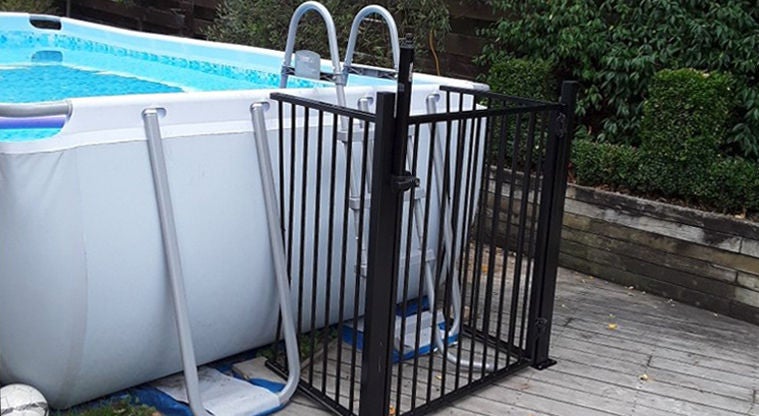Some council services will be unavailable over the Christmas and New Year break.
Check if you need to apply or order before Friday 19 December 2025.
To help prevent needless drownings, we check compliance of all residential pools every three years.
The leading causes of children, five and younger, drowning or being injured in pools are:
Any portable or inflatable pool that can hold 400mm depth of water or more is required to have a barrier by law. Other portable pools like paddling pools should be supervised at all times and emptied after use.
You have to maintain the barriers, fences, self-closing gates and latches, and ensure they are working correctly.
Homeowners, tenants, landlords and property managers carry joint responsibility for pool safety. Make sure the pool is always secure and ensure safety through regular maintenance of fences and gates.
By law, all pools, including small heated pools (spas, hot tubs, etc), must have a barrier to prevent unsupervised access to the immediate pool area by children younger than five years old.
A pool barrier must restrict access to the pool from:
Non-pool related items and activities can not be located inside the pool area. These include:
If we have your pool recorded as being empty, contact us for an inspection before you refill it.
Pool barriers:
Trellis or mesh fencing around the pool:
Ensure there are no trees that could assist young children climbing the fence.
For pools (including freestanding pools and swim spas), installed after 1 January 2017, removable ladders are not allowed unless they are enclosed by a complying barrier and gate.

Example of a pool barrier around a ladder.
If your pool barrier features a building or boundary fence, visit Other structures used as part of the pool barrier.
Gates into the pool area must:
The gate latch must be:
If the latch is accessible only by reaching over the gate, it must be set at least 150mm from the top or be shielded.
Your small heated pool does not need an inspection every three years if it meets the following criteria:
Exemptions are no longer available but under the Building Act you can apply for a waiver or modification as part of your building consent process.
Visit F9 Restricting access to residential pools for information about preventing children under five accessing unsupervised pools.